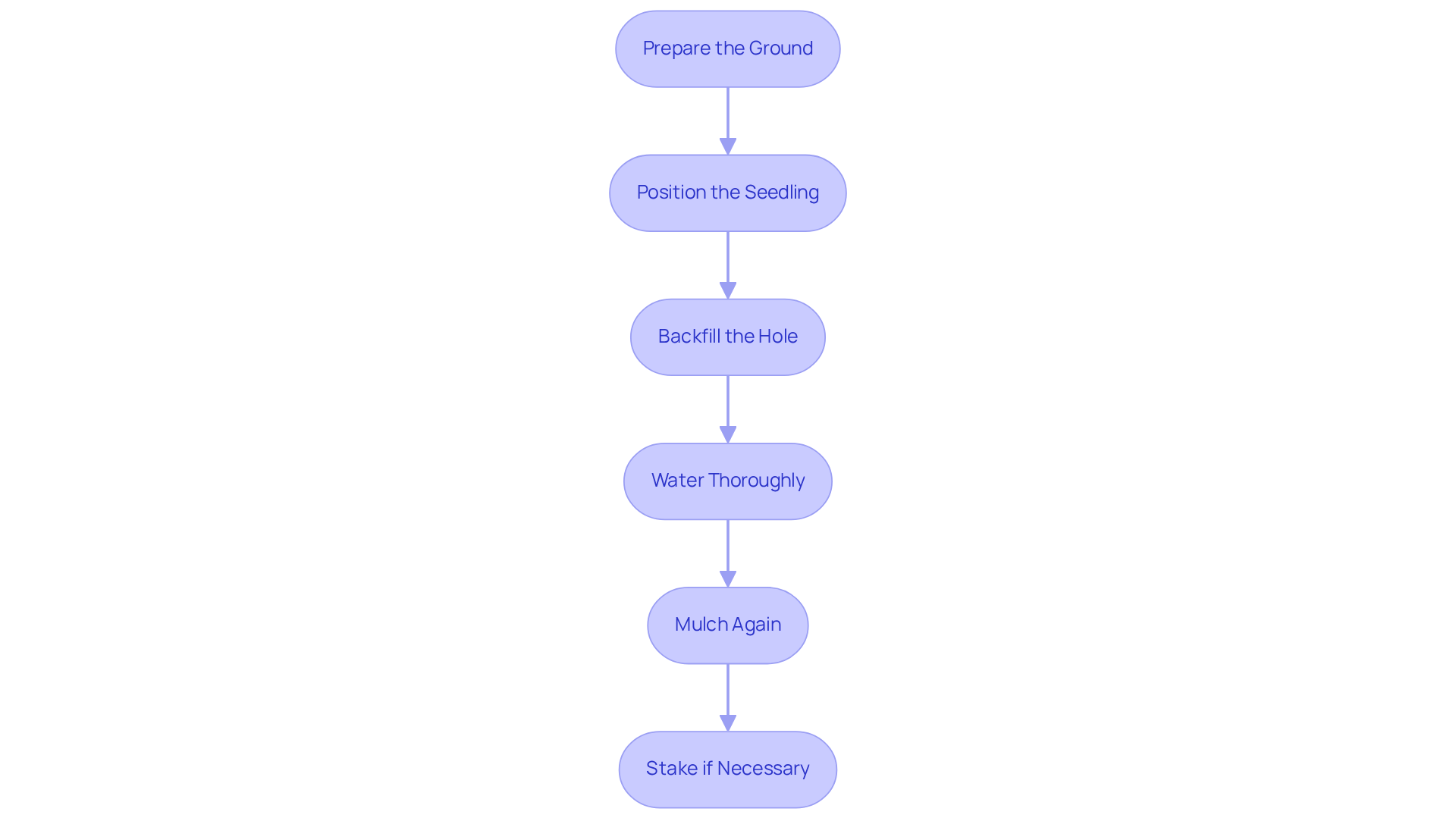The vibrant red lady papaya tree not only captivates with its striking appearance but also delights with its delicious, nutrient-rich fruit. This tropical plant, known for its self-fertile nature and rapid growth, presents home gardeners with a unique opportunity to cultivate both beauty and health in their outdoor spaces. However, successfully planting and nurturing a red lady papaya tree requires navigating various challenges, including soil preparation and pest management.
🌳 Want to grow a Red Lady Papaya Tree in your garden?
Consider exploring Red Lady Papaya Tree at Everglades Fram - shipped directly from Florida.
What steps must be taken to ensure this remarkable tree thrives and produces its sweet, juicy fruit?
1. Understand the Red Lady Papaya: Characteristics and Benefits
The red lady papaya tree (Carica papaya) is a compact, fast-growing tropical plant known for its striking appearance and delicious fruit. Typically reaching heights of 8 to 10 feet, it features large, lobed palmate leaves that create a lush canopy. This self-fertile red lady papaya tree can produce fruit without needing another tree for pollination, making it an ideal choice for home gardeners. The fruit is oblong, weighing between 1 to 3 pounds, and boasts vibrant orange-red flesh that is sweet and juicy when ripe.
The fruit of the red lady papaya tree is rich in vitamins A and C, and recognized for its digestive enzyme papain, supporting heart health and overall wellness. Recent studies underline the significant health benefits of this fruit, including its role in lowering cholesterol and aiding digestion. Additionally, the ornamental foliage of the red lady papaya tree adds aesthetic value to any garden landscape, making the red lady papaya tree a dual-purpose plant that enhances both culinary and visual appeal.
With its combination of health benefits and attractive features, the red lady papaya tree is a popular choice for individuals seeking to enrich their diets with nutritious fruit while enhancing the beauty of their outdoor spaces. Explore Everglades Farm's Fast-Growing Trees Collection today to discover this exceptional tropical fruit tree alongside other quick-yield greenery options for your home gardening needs.

2. Gather Tools and Prepare Your Garden for Planting
Before planting your red lady papaya tree, it is crucial to gather essential tools and materials: a shovel, trowel, watering can or hose, organic compost, mulch, and a pH tester for the growing medium. Selecting a planting site that receives direct sunlight for at least 6-8 hours daily and has good drainage is vital for optimal growth. Follow these steps to prepare your garden:
- Test the Ground: Use a pH tester to ensure that the ground is slightly acidic to neutral, ideally within the pH range of 6.0 to 7.0. This balance is essential for nutrient absorption and overall plant health.
- Clear the Area: Remove any weeds, rocks, or debris from the planting site to prevent competition for nutrients and moisture.
- Amend the Soil: Mix organic compost into the soil to enhance its fertility and improve drainage, creating a suitable environment for your papaya plant.
- Dig the Hole: Create a hole that is twice the width and depth of the root ball of your papaya seedling, allowing ample space for root expansion.
- Add Mulch: Apply a layer of mulch around the planting area to retain moisture and suppress weed growth, which can compete with your papaya for resources.
By following these preparation steps, you lay the foundation for a thriving red lady papaya tree, ensuring it receives the essential nutrients and care for successful growth. Additionally, be mindful of potential challenges such as pests and diseases that may affect your papaya plants, similar to those that can impact other tropical fruit trees.

3. Plant the Red Lady Papaya: Step-by-Step Instructions
To successfully plant your Red Lady Papaya, follow these essential steps:
-
Prepare the Ground: Begin by ensuring that the soil is well-draining and rich in organic matter. You may consider using a potting mix designed for tropical plants or enhancing your garden soil with compost. Additionally, applying fungicides to the soil can help prevent diseases that may affect the young plant, as noted in the user manual for soursop cultivation.
-
Position the Seedling: Place the seedling in the center of the hole, making sure that the top of the root ball is level with the surrounding ground. This positioning is vital for optimal growth and stability.
-
Backfill the Hole: Carefully fill the hole with the improved soil, gently pressing down to eliminate any air pockets that could impede root development.
-
Water Thoroughly: After planting, give the seedling a deep watering to help settle the soil around the roots, ensuring they have immediate access to moisture.
-
Mulch Again: Apply a layer of mulch around the base of the plant, leaving a few inches of space from the trunk to prevent rot and retain soil moisture. This practice is beneficial for soursop plants as well, aiding in the regulation of soil temperature and moisture levels, as highlighted in best practices for soursop cultivation.
-
Stake if Necessary: If the plant is tall or situated in a windy area, stake it for additional support until it establishes a strong root system, which is essential for long-term stability and growth.
By adhering to these steps and integrating best practices from the cultivation of soursop and other tropical fruit plants, you can effectively set your garden up for the thriving of the red lady papaya tree.

4. Maintain Your Papaya Tree: Care, Watering, and Fertilization
To maintain your Red Lady Papaya tree effectively, adhere to the following care guidelines:
-
Watering: Papayas thrive on consistent moisture, particularly during dry spells. It is suggested to irrigate the plant thoroughly once a week, increasing frequency during warm weather to ensure the soil stays moist but not saturated. In regions with limited rainfall, up to 10 gallons of water per tree may be necessary daily during the fruit-bearing period. As noted by agribusiness consultant James Mwangi Ndiritu, "Watering is essential for achieving optimal plant growth and yield."
-
Fertilization: A balanced, slow-release fertilizer should be applied every 6-8 weeks throughout the growing season. A fertilizer with a 14-14-14 ratio is ideal for promoting robust growth and maximizing fruit production. Furthermore, including organic fertilizers, like a combination of compost and aged manure, can improve soil structure and fertility, supporting the plant's nutritional requirements. It is also important to apply fertilizers 15-20 cm from the stem in a trench to optimize nutrient uptake.
-
Pruning: Regular trimming is essential for the health of your papaya plant. Eliminate any dead or harmed leaves to promote new growth and enhance air circulation around the plant, which aids in preventing diseases.
-
Pest Management: Vigilance against pests like aphids and mealybugs is essential. Regular inspections can help identify infestations early. To manage these pests effectively, employ organic insecticides or neem oil as needed for your red lady papaya tree.
-
Harvesting: Papaya fruits typically ripen within 5-6 months. Harvest them when the skin transitions from green to yellow and yields slightly to pressure, ensuring optimal flavor and quality. Additionally, be mindful that papaya plants are sensitive to flooding, so ensure proper drainage to avoid waterlogging.
-
Mulching: Spreading mulch around the base of the papaya plant helps retain moisture and regulate ground temperature, contributing to overall plant health.
-
Monitoring Soil Nutrients: Regularly check soil nutrient levels and adjust fertilization practices as needed to support optimal growth and fruit production. Common diseases affecting papaya trees include powdery mildew, anthracnose, and black spot, so staying vigilant can help mitigate these issues.

Conclusion
The red lady papaya tree is a remarkable addition to any garden, seamlessly blending aesthetic appeal with numerous health benefits. Its vibrant fruit not only enhances culinary experiences but also contributes significantly to overall wellness, making it an excellent choice for home gardeners seeking to cultivate both beauty and nutrition.
This guide outlines key steps in planting and caring for the red lady papaya tree. From preparing the soil and selecting the right location to implementing effective watering and fertilization practices, each aspect plays a crucial role in ensuring the tree thrives. Additionally, vigilance in pest management and regular maintenance will further support healthy growth and fruitful yields.
Ultimately, growing a red lady papaya tree transcends the enjoyment of its delicious fruit; it presents an opportunity for a rewarding gardening experience that benefits both the individual and the environment. By following the outlined steps and nurturing this tropical gem, gardeners can enjoy a bountiful harvest while enhancing their outdoor spaces. Embrace the journey of cultivating your red lady papaya tree and reap the rewards of its beauty and health benefits.
Transform Your Garden with the Red Lady Papaya Tree!
Start your journey to beauty and wellness today—cultivate your own tropical paradise with Everglades Farm.
👉🏻 Buy Red Lady Papaya Tree
👉🏻 Explore Papaya Trees Collection
Frequently Asked Questions
What is the red lady papaya tree?
The red lady papaya tree (Carica papaya) is a compact, fast-growing tropical plant known for its striking appearance and delicious fruit.
How tall does the red lady papaya tree grow?
The red lady papaya tree typically reaches heights of 8 to 10 feet.
What are the characteristics of the leaves of the red lady papaya tree?
The tree features large, lobed palmate leaves that create a lush canopy.
Does the red lady papaya tree require another tree for pollination?
No, the red lady papaya tree is self-fertile and can produce fruit without needing another tree for pollination.
What does the fruit of the red lady papaya look like?
The fruit is oblong, weighs between 1 to 3 pounds, and has vibrant orange-red flesh that is sweet and juicy when ripe.
What nutritional benefits does the red lady papaya fruit offer?
The fruit is rich in vitamins A and C and contains the digestive enzyme papain, which supports heart health and overall wellness.
What health benefits are associated with consuming red lady papaya?
Recent studies suggest that red lady papaya can help lower cholesterol and aid digestion.
How does the red lady papaya tree enhance garden aesthetics?
The ornamental foliage of the red lady papaya tree adds aesthetic value to any garden landscape.
Why is the red lady papaya tree a popular choice for home gardeners?
It offers a combination of health benefits from its nutritious fruit and attractive features that enhance the beauty of outdoor spaces.





0 comments